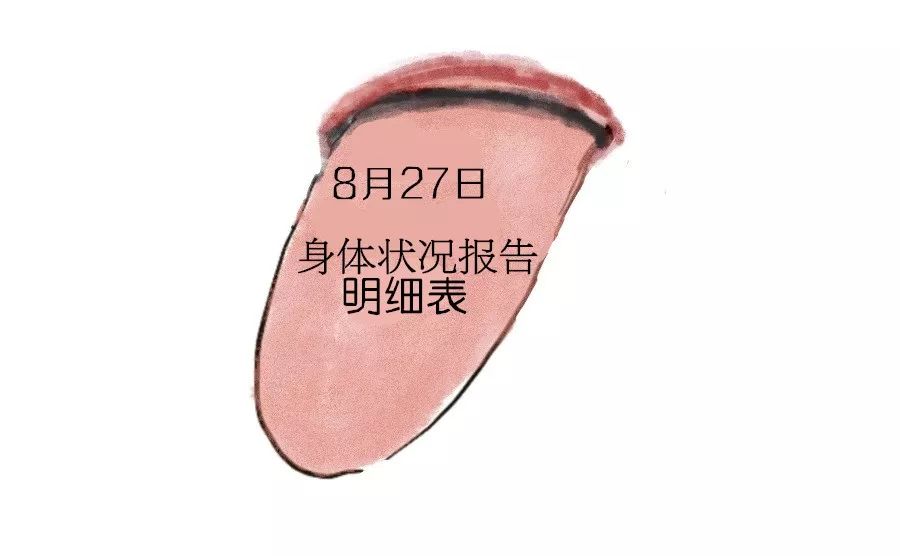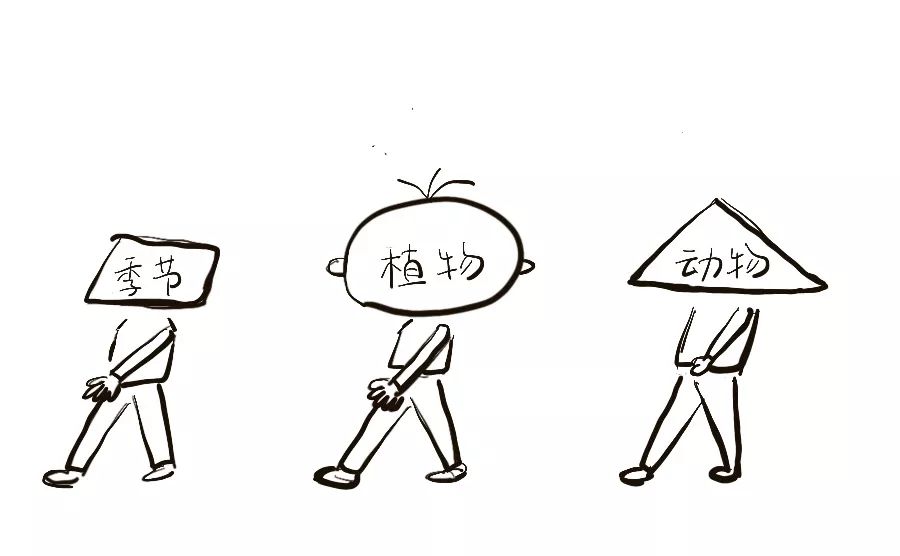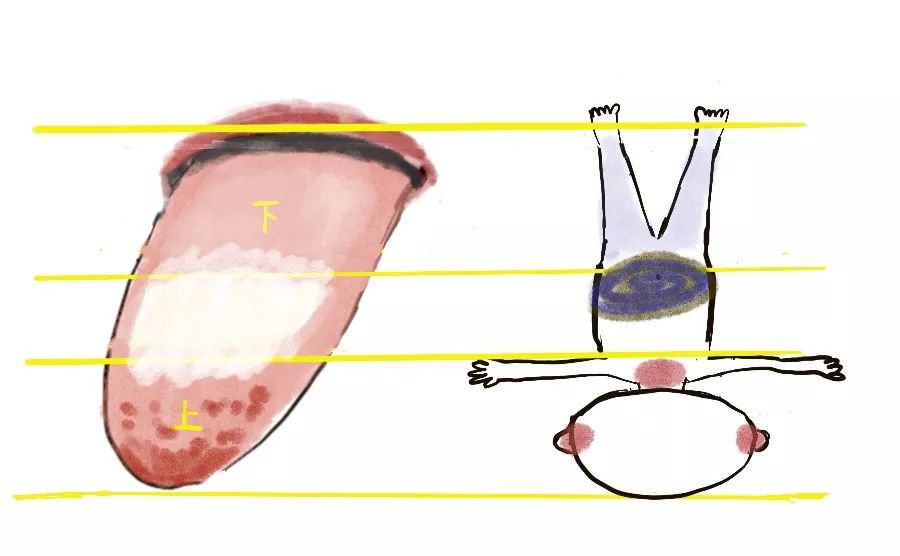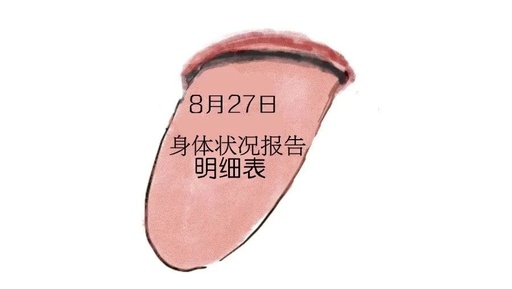A child had a fever due to food stagnation, and after the mother took appropriate measures, she recorded the changes in tongue coating from fever to recovery.
sdfd
sdfd
sdfd
sdfd
sdfd
Before discussing tongue coating, let’s review what food stagnation is.Food stagnation occurs when the food consumed exceeds the body’s digestive capacity, leading to poor breakdown and absorption, causing food to accumulate in the gastrointestinal tract. Initially, the body may just feel a lack of appetite, sensing it cannot digest more food. As the food remains in the gastrointestinal tract for a longer time, it may ferment and generate heat. This fermentation process is the body’s attempt to further decompose this waste, but at this point, the body may experience symptoms of heat, such as bloating, bad breath, sweating, hot palms and soles, and in severe cases, coughing, fever, and tonsillitis with redness and swelling.
The handling process in this case is also a process of eliminating internal waste, and we can observe the reduction of waste in the body through the changes in tongue coating until it returns to normal. Since we cannot see the internal condition of the body, the tongue serves as a miniature representation of the internal state.

Why can the tongue reflect the condition of the body?
The principle of observing the tongue is based on holography, meaning that by examining the tongue, one can understand the internal condition of the body. The thickness of the tongue coating indicates the smoothness of bodily functions; whether the coating is yellow or white can indicate the body’s cold or heat condition; the size of the tongue reflects the circulation of qi and blood; and dividing the tongue into three parts—front, middle, and back—represents the conditions of the upper, middle, and lower jiao…
The holographic principle also reflects a kind of synchronicity.
For example, as spring approaches, flowers, grass, and trees change, temperatures rise, and the position of the sun shifts. Simultaneously, the human body also undergoes changes; for instance, in spring, pores gradually open, some people may start to shed skin, others may feel more cheerful, and children may experience increased appetite and rapid growth during this cycle. Some elderly individuals may feel pain in their bodies, indicating a change in weather without needing to check the calendar, simply sensing the seasonal shift. This reflects the synchronicity between humans and the world.


The human body also exhibits holography and synchronicity. For instance, some doctors can assess the body’s condition through the palm, while others can determine the body’s cold, heat, deficiency, and excess by feeling the pulse, and some can assess the body’s condition by touching the ears. The operational state of the body is reflected in various subtle parts. The tongue image is one such reflection, synchronizing with the internal state of the body.
The tongue coating consists of shed epithelial tissue, food residues, bacteria, and exuded cells, which may seem complex. However, Traditional Chinese Medicine (TCM) has summarized some patterns based on its changes that reflect our bodily changes. Scientific investigations have found that the color of the tongue coating, whether white or yellow, is related to the microbial community on the tongue. This means that the microbial community of white coating is not entirely the same as that of yellow coating. This at least indicates that TCM’s observation of tongue coating has its rationale, and more insights await further research.
Generally speaking, a basic normal tongue image looks like this: the tongue body is light red, neither too thick nor too thin, neither too old nor too young (the tongue in the image is slightly thick); the tongue coating is thin, like a mist covering the tongue, with the tip and sides being relatively thinner. This tongue image suggests that the body’s functions are smooth, indicating normal circulation of qi and blood.
If a person experiences discomfort and qi and blood circulation is obstructed, the tongue image will also change. For example, the tongue body may become pale or red, thinner or thicker; the tongue coating may become thicker, more abundant, or even less, or absent.
For instance, in the case of food stagnation mentioned above, if the gastrointestinal tract is congested with waste, children often have undigested food remaining in their gastrointestinal tract, leading to a thick tongue coating. This is quite common, and we can adjust feeding based on the observation of the tongue coating; when the coating is thick, it indicates that the previously consumed food has not been fully absorbed and metabolized, necessitating a rest period for the child’s gastrointestinal tract.
The tongue image may appear as follows.
sdfd
sdfd
If the body has been exposed to cold, it may be due to wind exposure, improper use of cold medications, or consumption of cold foods, or it may be due to a decrease in the vitality of qi and blood, which is a manifestation of cold. In this case, the tongue coating may be covered with white coating, thicker than normal.
For example, this.
sdfd
sdfd
If the body’s constitution is inherently cold and deficient, we may observe that the tongue body is relatively pale, which may also affect the color of the lips, commonly referred to as insufficient blood color.
For example, this.
sdfd
sdfd
If the body has dampness, this dampness can hinder metabolism, leading to waste accumulation. Dampness mixed with waste resembles mud on a dirt road after rain, causing the tongue coating to become white, thick, and appear muddy and greasy. Just like a vehicle traveling on a muddy road, we can infer that the speed will not be fast, and the tires and body will be covered in mud.
For example, this.
sdfd
sdfd
If dampness is mixed with heat, the tongue body will appear redder than usual, and the tongue coating may be yellow. This type of tongue coating is generally referred to as damp-heat. Due to insufficient bodily energy, the body cannot expel the accumulated waste, and this waste begins to ferment. This tongue coating indicates the state of qi and blood circulation within the body.
For example, this.
sdfd
sdfd
sdfd
However, sometimes a yellow tongue coating may only be a thin layer of yellow on top, with a thick white coating underneath. The tongue coating shown in the image below has a thin yellow layer in the middle and lower jiao, but the underlying coating is thick, indicating significant stagnation, with white predominating, indicating cold accumulation; the yellow indicates localized heat. This suggests that the intestines are filled with a large amount of waste, and the gastrointestinal function is certainly abnormal, with waste generating heat, leading to poor digestion and absorption.
For example, this.
sdfd
sdfd
If our body lacks body fluids, the tongue may have red spots or a red tip. At this point, we need to pay attention to why the body is deficient in fluids; sometimes it is due to the invasion of pathogenic factors that deplete body fluids, and sometimes it is because the useful body fluids have been dried up by internal heat.
For example, this.
sdfd
If our body has excess water, this water can turn into waste, unable to be metabolized, leading to a slippery tongue that appears shiny, and some children may drool frequently. This reflects a temporary inability of the spleen and stomach to process this dampness.
For example, this.
sdfd
The tongue image can also reflect the constitution of the individual.If a person’s tongue is relatively thick, even with teeth marks, we can imagine it as a balloon filled with water, indicating stagnation of dampness, and is also a manifestation of cold deficiency, where the ability to expel dampness has decreased, causing dampness to accumulate in the body, resulting in slow overall circulation and insufficient energy.
For example, this.
sdfd
sdfd
Conversely, if a person’s tongue appears old, it indicates a long-term deficiency of body fluids. We can imagine cooking meat; tender meat is soft and juicy, while old meat is tough and has less juice, leading to a thin, dry, and old tongue. Overall energy is also insufficient.
For example, this.
sdfd
sdfd
Geographic tongue is also a sign of severe fluid deficiency, as is a peeled tongue. Some teachers say it is a manifestation of yin deficiency, where yin refers to body fluids. It indicates that the body’s ability to store water is compromised, similar to a container that has cracked and leaks water.
sdfd
sdfd
Some adults may develop cracks on their tongues, resembling the dry, cracked land during drought, which is also a sign of fluid deficiency.
sdfd
sdfd
Understanding what is white, what is yellow, what is thick, and what is thin requires careful observation. Here, we only provide a general direction.
The internal state reflects the condition of the three jiao: the innermost is the lower jiao, which includes the area below the navel, encompassing our sleep and emotional accumulation. The middle jiao is the area from the navel to the diaphragm, reflecting our digestive capacity, spleen and stomach function, and resistance to pathogens. The outermost is the upper jiao, which includes all organs in the head and face, such as the eyes, ears, nose, mouth, face, brain, neck, upper arms, and shoulders.

The three jiao influence each other; issues in the upper jiao are relatively easier to resolve, followed by the middle jiao, while the lower jiao is the most challenging to adjust. For instance, if a person is affected by wind-cold, it initially presents as an upper jiao issue, such as a runny nose. If not addressed, it can lead to middle jiao problems, resulting in poor appetite and difficulty in bowel movements. If still unresolved, it may progress to the lower jiao, potentially causing diarrhea, leg pain, back pain, and poor sleep.

Observing the tongue provides only one perspective and may not lead to a specific diagnosis. TCM emphasizes the integration of the four diagnostic methods: observation, listening, inquiry, and palpation. Observation includes assessing body posture, tongue, and complexion; listening encompasses hearing the voice and smelling the breath and stool; inquiry involves asking about eating, drinking, excretion, sleep, and emotions; palpation includes pulse taking and physical examination.
Integration means combining data from observation, listening, inquiry, and palpation to corroborate each other. For example, if a foul stool odor is detected, bad breath is present, and there is a lack of appetite, along with a thick tongue coating and a pulse indicating stagnation, all evidence points to food stagnation, leading to a correct diagnosis. However, if a child’s tongue is very red, and the lips are also red, but the child has persistent white phlegm, long-term sleep issues, nasal inflammation, poor appetite, and cold feet, the body shows signs of cold while the tongue appears hot. In this case, one must determine which is the illusion and which obscures the true condition, finding the main logic to deduce the diagnosis.
Additionally, tongue coating can change throughout the day. For instance, after eating, after sleeping, and at different times of the day, there will be variations. We can observe the tongue coating and correlate it with eating, drinking, excretion, sleep, and emotional balance.
The significance of observing tongue coating lies in its demonstration of body care and its reminder for disease prevention. For example, if a child has not had a bowel movement for several days and the tongue coating appears thick, we should review our dietary, emotional, and exercise balance. If we notice a child’s poor appetite and the tongue coating is white and greasy, we should recognize that this relates to cold, prompting us to review whether the cold is from food or the external environment, or from medication, understanding the cause to avoid repeating mistakes in the future.
Having read this, I believe everyone has a preliminary understanding of how to observe tongue coating.
Type “1” in the public account dialogue box to listen to the free tongue diagnosis micro-course.
For more observations on tongue coating, you can read related articles.
What have I learned from observing tongue coating for over 900 days?
How to determine deficiency and cold? First, look at the tongue coating.
General adjustment strategies for deficiency and cold (sub-health) constitution.
How to know if a child is normal and healthy?
Written by | Yang Qiandong, Guo Shala
Images by | Guo Shala



